Flow Configurations in a Y Splitting-Junction Microchannel
Abstract
:1. Introduction
2. Device and Setup Specifications
3. Results
4. Discussion and Conclusions
Acknowledgments
Author Contributions
Conflicts of Interest
References
- Mikielewicz, D.A. New method for determination of flow boiling heat transfer coefficient in conventional-diameter channels and minichannels. Heat Trans. Eng. 2010, 31, 276–287. [Google Scholar] [CrossRef]
- Calabriso, A.; Borello, D.; Romano, G.P.; Cedola, L.; Del Zotto, L.; Santori, S.G. Bubbly flow mapping in the anode channel of a direct methanol fuel cell via PIV investigation. Appl. Energy 2016, 185, 1245–1255. [Google Scholar] [CrossRef]
- Laser, D.J.; Santiago, J.G. A review of micropumps. J. Micromech. Microeng. 2004, 14, R35–R64. [Google Scholar] [CrossRef]
- Kallio, P.; Kunkova, J. Microfluidics; Tekes: Helsinki, Finland, 2004. [Google Scholar]
- Ameel, T.A.; Warrington, R.O.; Wegeng, R.S.; Drost, M.K. Miniaturization technologies applied to energy systems. Energy Convers. Manag. 1997, 38, 978–979. [Google Scholar] [CrossRef]
- Nuno Leal, G.S.; Semiao, V. Determination of microchannels geometric parameters using micro-PIV. Chem. Eng. Res. Des. 2009, 87, 3–298. [Google Scholar]
- Jasikova, D.; Kotek, M.; Kopecky, V. The feasible study of the water flow in the micro channel with the Yjunction and narrow structure for various flow rates. EPJ Web Conf. 2015, 92, 02030. [Google Scholar] [CrossRef]
- Cook, K.J.; Fan, Y.F.; Hassan, I. Experimental investigation of a scaled-up passive micromixer with uneven interdigital inlet and teardrop obstruction elements. Exp. Fluids 2012, 52, 1261–1275. [Google Scholar] [CrossRef]
- Truesdell, R.A.; Bartsch, W.; Buranda, T.; Sklar, L.A.; Mammoli, A.A. Direct measurement of mixing quality in a pulsatile flow micromixer. Exp. Fluids 2005, 39, 819–827. [Google Scholar] [CrossRef]
- Wereley, S.T.; Meinhart, C.D. Recent advances in micro-particle image velocimetry. Annu. Rev. Fluid Mech. 2010, 42, 557–576. [Google Scholar] [CrossRef]
- Capone, A.; Romano, G.P. Interactions between fluid and fibers in a turbulent backward-facing step flow. Phys. Fluids 2015, 27, 053303. [Google Scholar] [CrossRef]
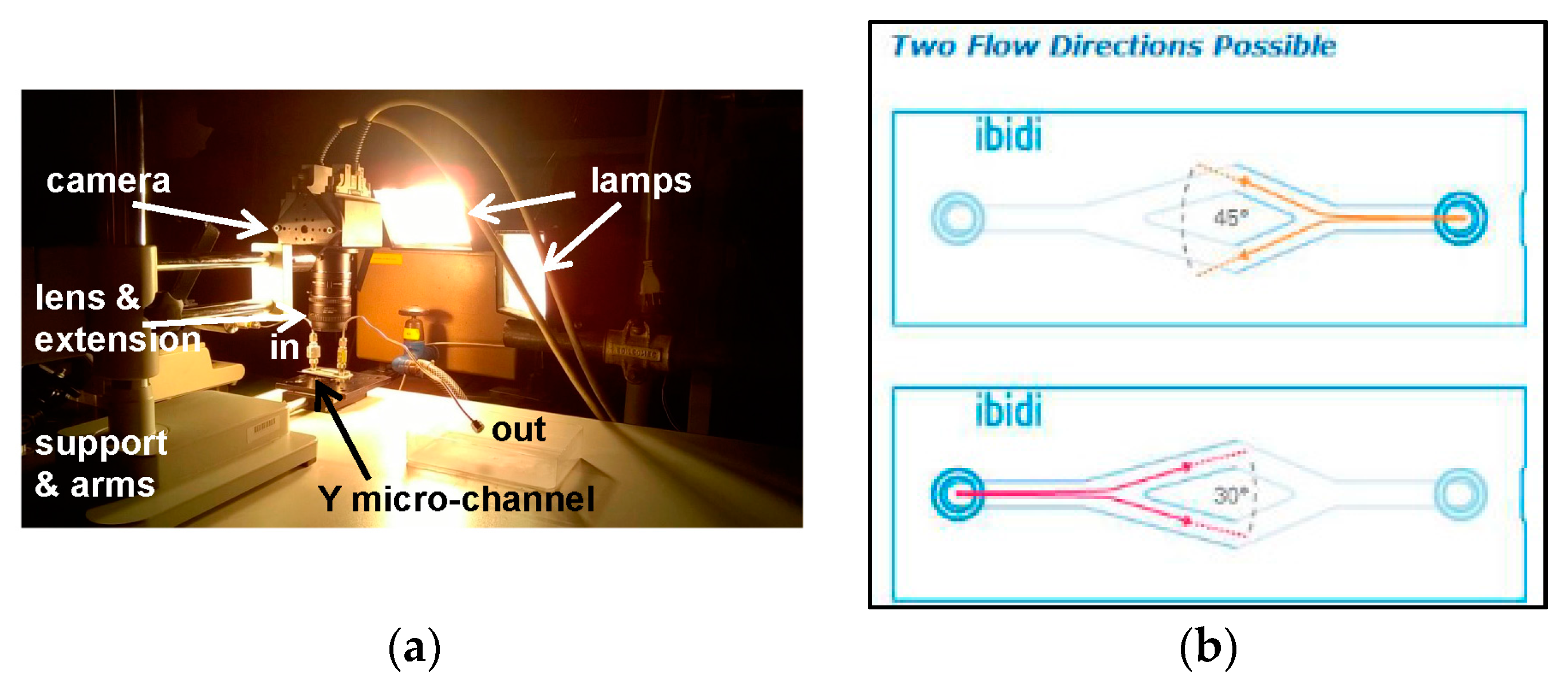

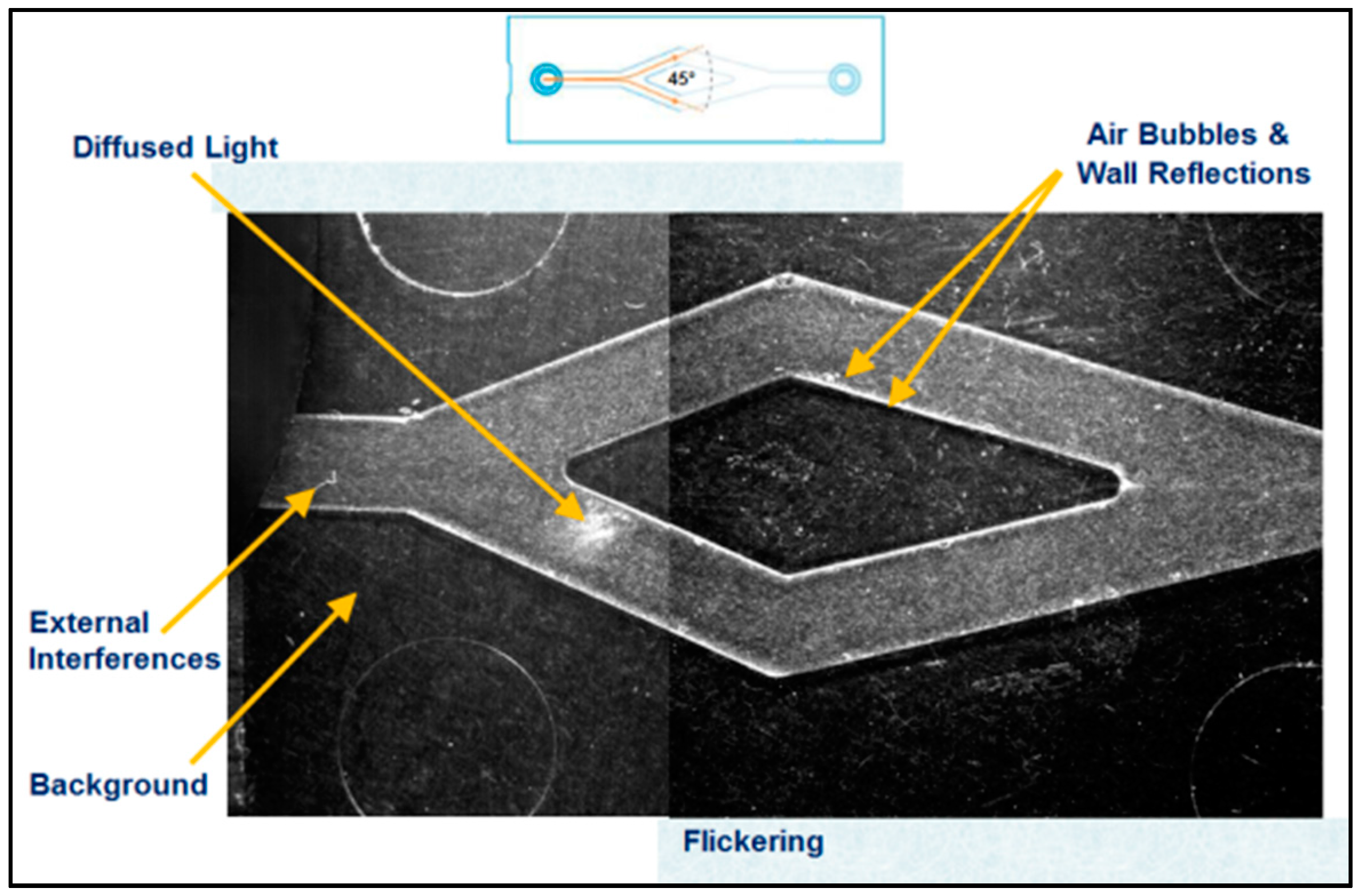
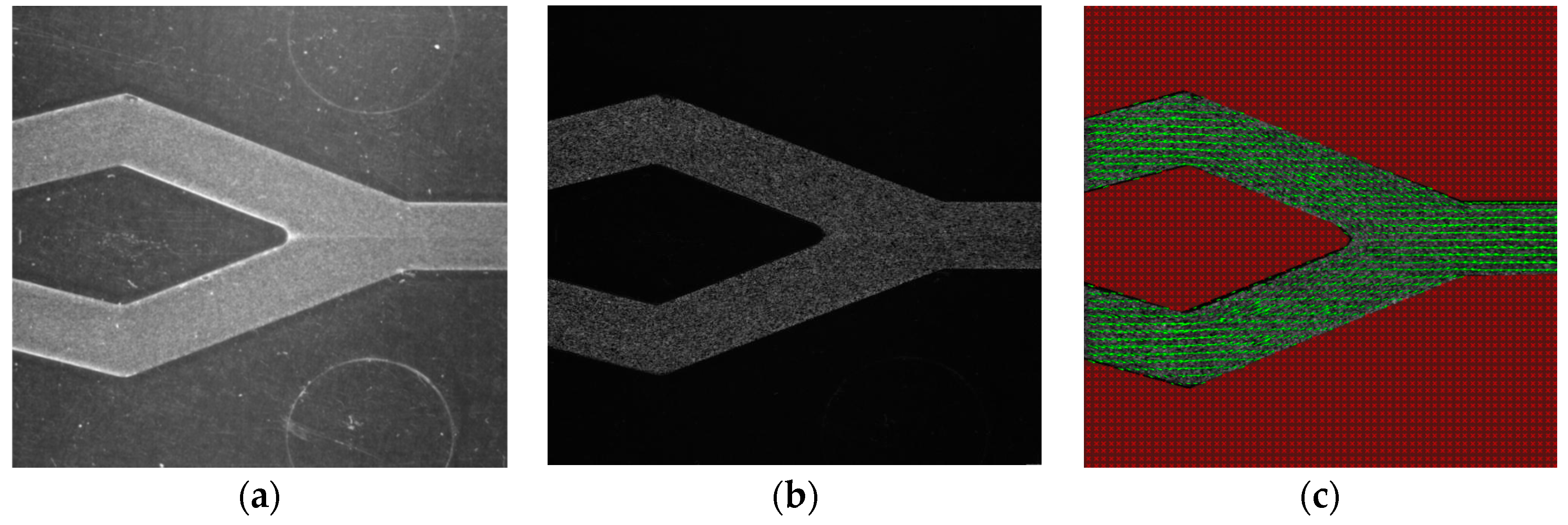


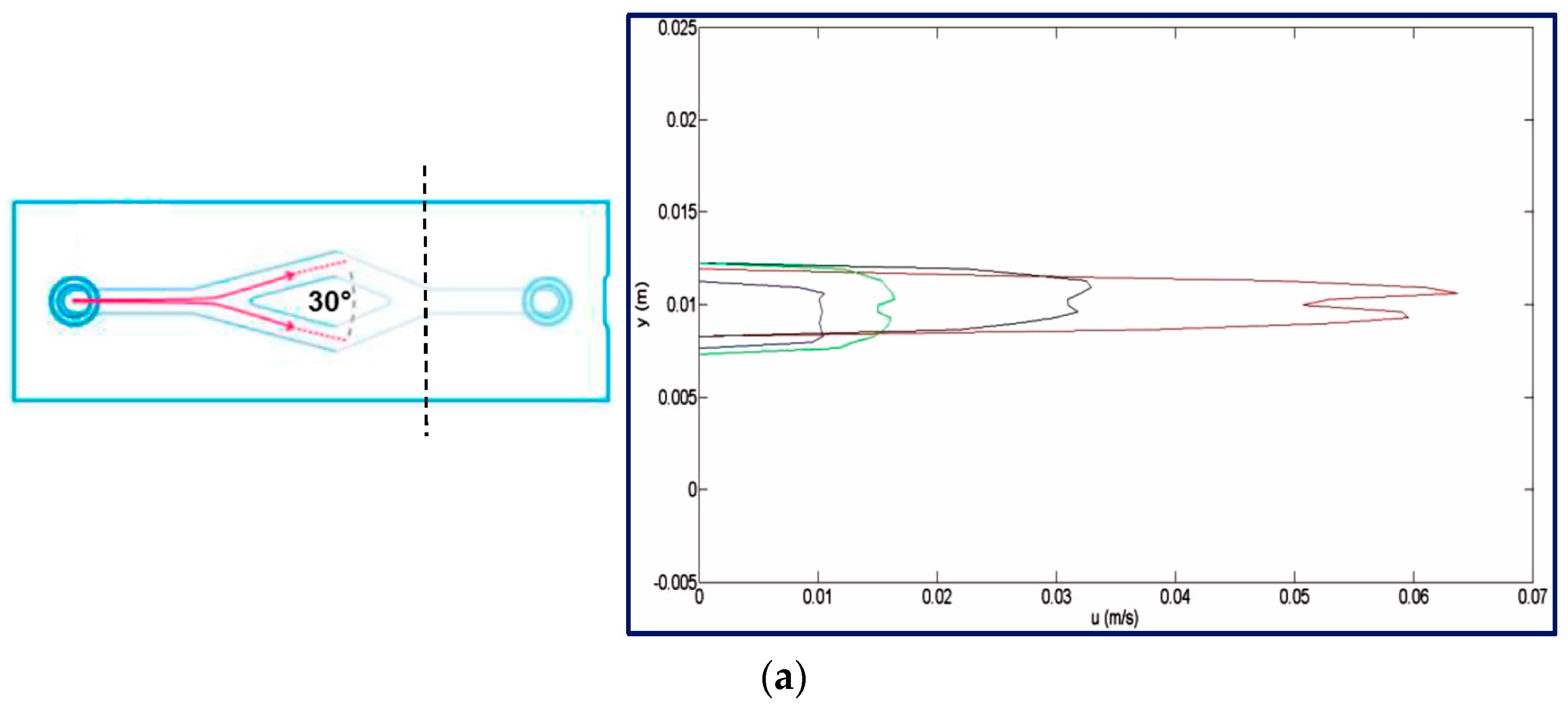
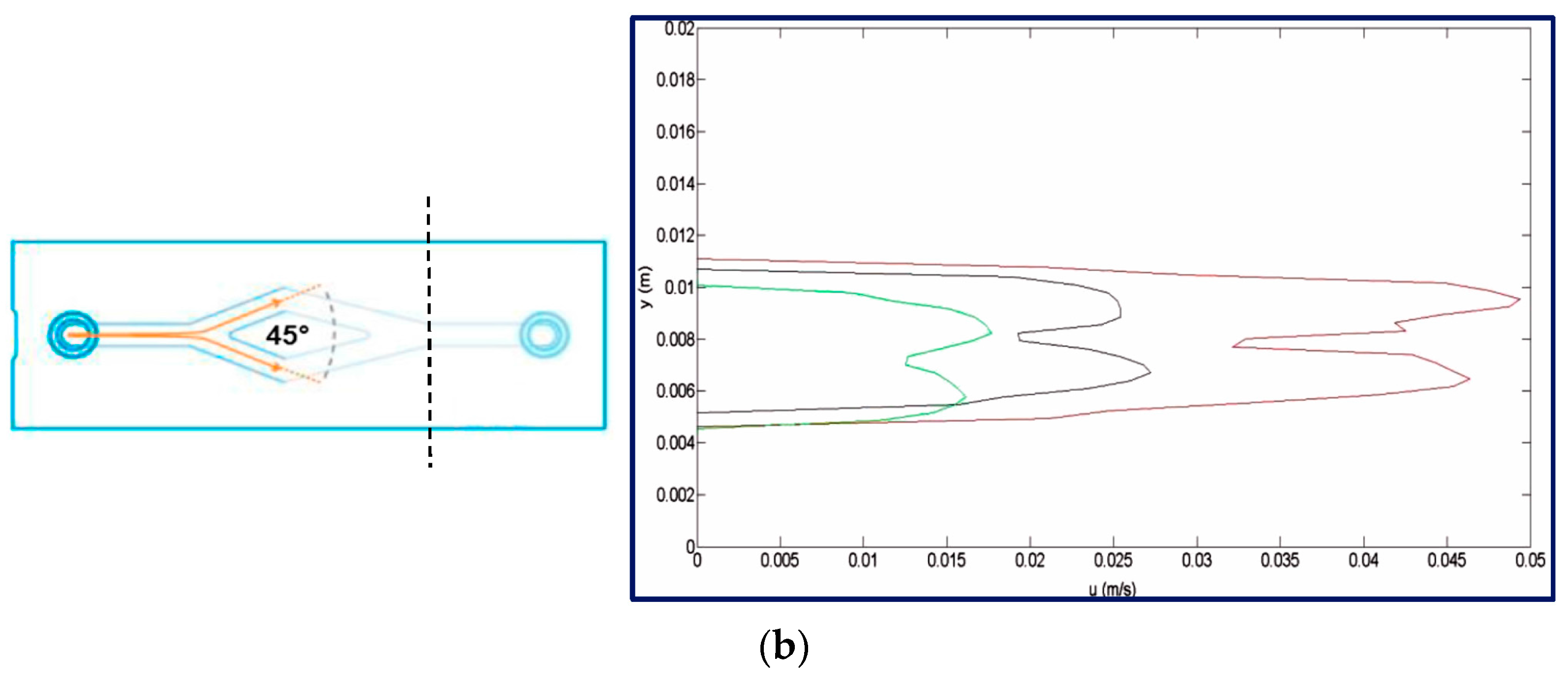
© 2017 by the authors. Licensee MDPI, Basel, Switzerland. This article is an open access article distributed under the terms and conditions of the Creative Commons Attribution (CC BY) license (http://creativecommons.org/licenses/by/4.0/).
Share and Cite
Sinibaldi, G.; Romano, G.P. Flow Configurations in a Y Splitting-Junction Microchannel. Fluids 2017, 2, 18. https://doi.org/10.3390/fluids2020018
Sinibaldi G, Romano GP. Flow Configurations in a Y Splitting-Junction Microchannel. Fluids. 2017; 2(2):18. https://doi.org/10.3390/fluids2020018
Chicago/Turabian StyleSinibaldi, Giorgia, and Giovanni P. Romano. 2017. "Flow Configurations in a Y Splitting-Junction Microchannel" Fluids 2, no. 2: 18. https://doi.org/10.3390/fluids2020018





